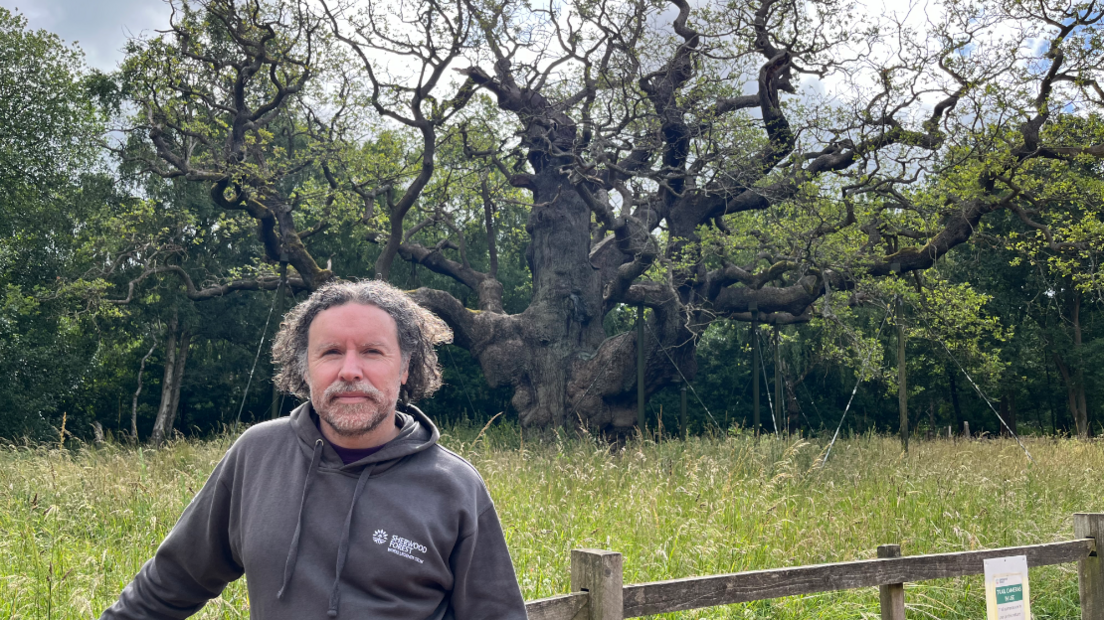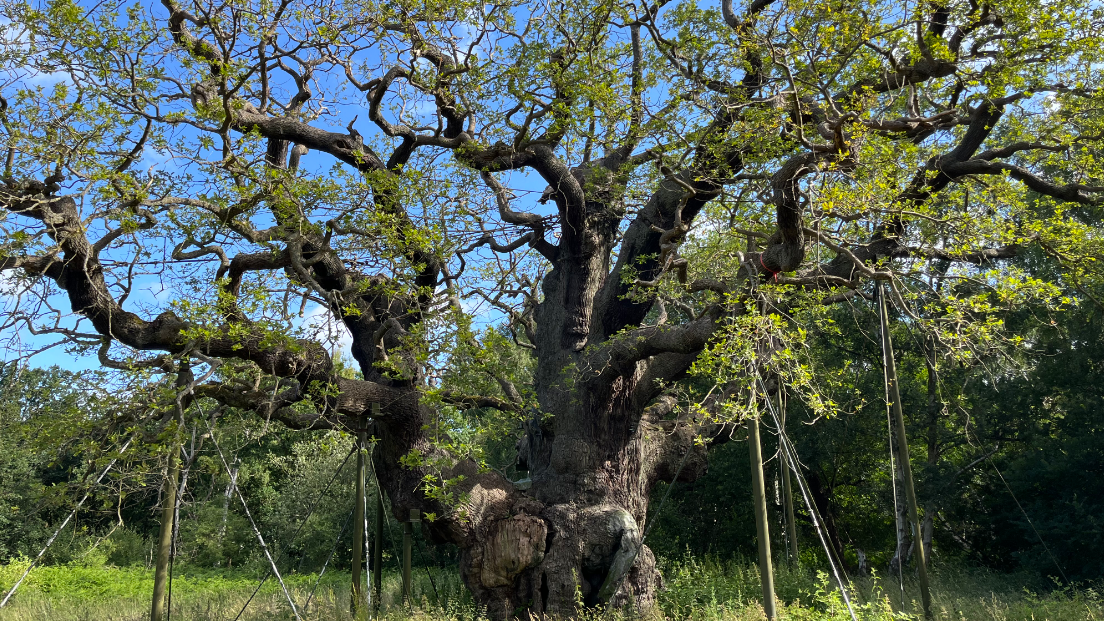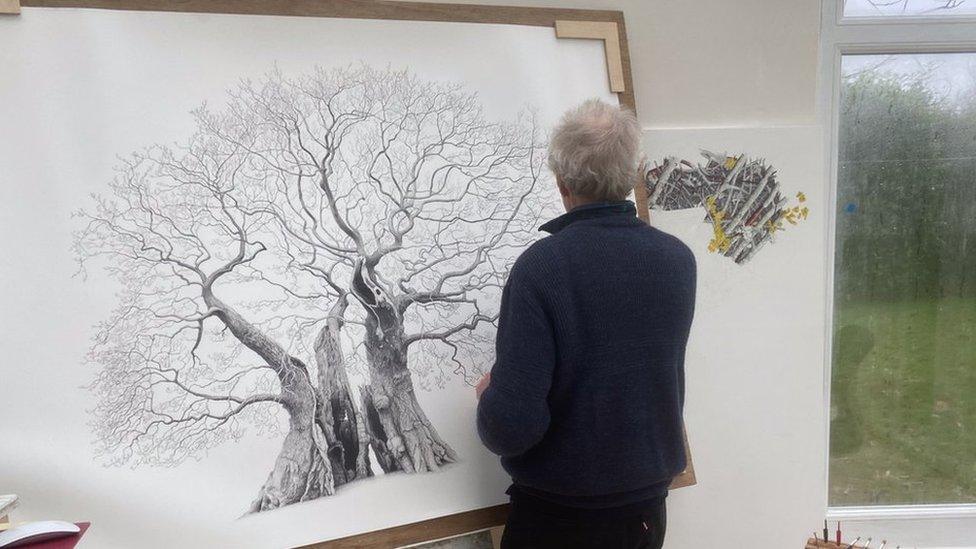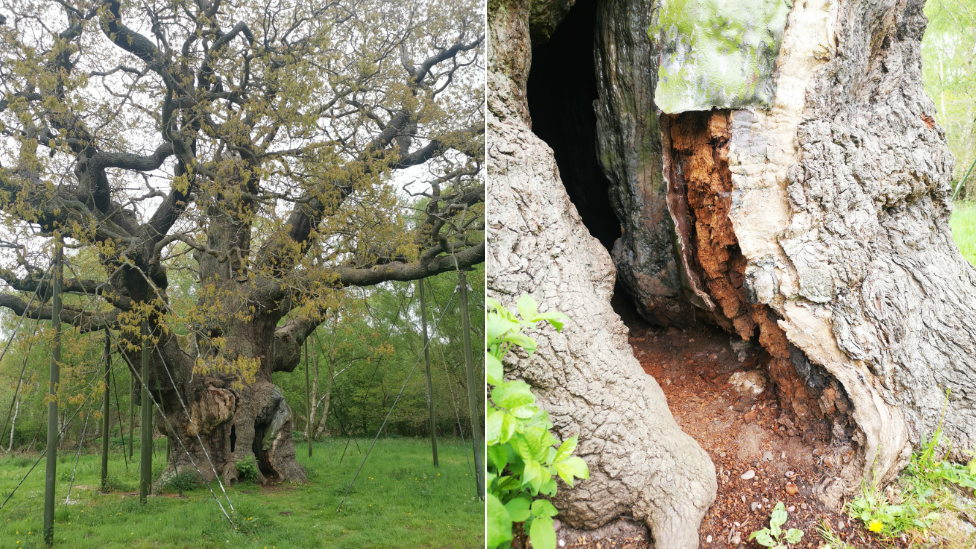Rumours 'Robin Hood' oak is dying dispelled by RSPB

Rob James, from the RSPB, said the tree was "symbolic" to Nottinghamshire
- Published
Rumours that an ancient oak tree in Nottinghamshire will die this winter have been dispelled by the RSPB.
On a social media post, there was speculation the Major Oak's roots have "all but rotted away and won't be alive this winter", which caused the RSPB to respond and quash the online myth.
As legend would have it, the tree in Sherwood Forest was used as a hideout by Robin Hood and has been fenced off since the 1970s to protect it.
In response to the rumours, the RSPB said: "While all trees do eventually reach the end of their life, the Major Oak will still continue to live and be in leaf for many years to come."
On the condition of the tree's roots, the RSPB added: "We are now working alongside some of the UK's leading tree and soil health experts to carefully aerate the soil around the tree's roots, increasing oxygen flow, as well as to add a mulch made from natural material in the forest."
'A resilient tree'
Rob James, from the RSPB at Sherwood Forest, told BBC Radio Nottingham that the tree is still in leaf, meaning it is still alive.
"No-one can definitively say how long the tree is going to live, it is around 1,100 years old," said Mr James.
"There is a saying that oak trees spend 300 years growing, 300 years living and 300 years dying, so it has already exceeded that."
Mr James said the Major Oak had endured some challenges in recent years.
"It's a remarkable and resilient tree," he added.
"It's still in leaf at the end of the day. Despite it not looking as healthy as it has in the past, we are confident we can revive as much vitality as we can.
"The tree means so much to so many people and means so much to local people. It's symbolic to the county, but it also means so much to people all over the world as it is associated with the legend of Robin Hood."

The tree, which is supported by metal poles, is estimated to weigh about 23 tonnes, the RSPB said
The RSPB said despite the tree "looking its age", different methods had been used to make sure it stayed alive.
Mr James said: "There has been frequent speculation about its health for many years, and it has certainly endured some challenges in recent times, including three consecutive droughts during peak growing periods combined with unprecedented high temperatures in July 2022.
"One of the biggest challenges it faces is the impact of soil compaction above its vast root system, caused by decades of visitors walking up to the tree. This has made it harder for rainwater to penetrate the soil and for essential microbial activity to take place below the surface.
"Vegetation around the base of the tree is being allowed to grow naturally to help break up the compacted earth and to retain moisture and vital nutrients."
Follow BBC Nottingham on Facebook, external, on X, external, or on Instagram, external. Send your story ideas to eastmidsnews@bbc.co.uk, external or via WhatsApp, external on 0808 100 2210.
- Published3 June 2024

- Published25 March 2024

- Published22 July 2020
